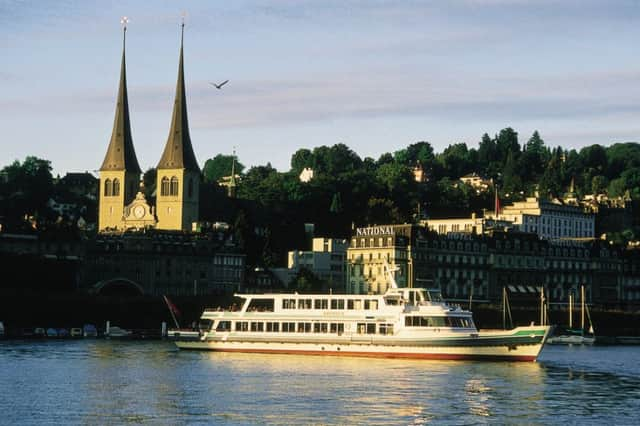Seven things you should know about FC Luzern


First up is a difficult, but by no means impossible, obstacle in the form of FC Luzern. The Swiss side are an unfamiliar name in Scottish football circles, but they did finish fourth in a league ranked 10 places higher than the Premiership in the UEFA coefficient, so they enter the tie as favourites nonetheless.
Later in the week we’ll provide a tactical preview of the match. For now we’ve put together a rundown of facts to let you familiarise yourself with St Johnstone’s Swiss opponents.
Advertisement
Hide AdAdvertisement
Hide Ad• The club plays in Lucerne with a population of 76,000. This makes it the largest in central Switzerland. One of its most famous sons, strangely enough, is WWE wrestler Antonio Cesaro.
• After amalgamating the various Swiss leagues into one structure in 1944, Luzern have spent the majority of their existence in the top flight. However, they ran into financial problems in the early 90s and were relegated in 2003. They finished fourth from bottom, earning them the unwanted distinction of being the team with the highest points total to drop into the relegation/promotion post-split group (the split has since been removed). Nevertheless, they were favoured to be one of the two teams who would survive and continue in the newly reconstructed 10 team Swiss Super League. Unfortunately, they underperformed badly after the split, finishing third and being relegated. The stay in the second tier would not be a long one, however, as they won promotion back three years later.
• Despite being a relatively small club in relation to the rest of the Swiss top flight, Luzern’s ambitions routinely find them in the media spotlight for boardroom disputes and unexpected sackings of managers. In fact, in the last 13 years they’ve gone through 12 bosses (not including interims), six of which lasted less than a year.
• In their last European excursion in 2012, Luzern went out in the Europa League qualifying playoff after a 3-2 aggregate defeat to Belgian side Genk. In eight ventures into European football they’ve made it out of the first round twice (each time exiting in the second), the last of which was the 1992/93 Cup Winners’ Cup.
• Notable former players include the one-time talisman of the Swiss national team, Alexander Frei. The beloved striker first heralded himself as a goalscorer after 18 months with Luzern following non-descript spells at Basel and Thun. He’s now the club’s Sporting Director and his influence helped persuade highly sought-after striker Marco Schneuwly to join the club this summer. Legendary manager Ottmar Hitzfeld, who led Switzerland at the 2014 World Cup, also finished his playing career with the club.
• Their most successful manager was well-travelled German coach Friedel Rausch. Luzern was just one of his 12 stops in management but probably the place where he made the biggest impression; bringing home the club’s only league championship in 1989 and second cup success in 1992.
• Luzern play their home matches in the relatively new Swissporarena. Construction on the stadium was completed in 2011 and has a capacity of just under 17,000. Luzern’s support are known for being one of the most vocal in the country and with the ground nicely accommodating the 11,200 average attendance, matches there are known to be quite atmospheric.